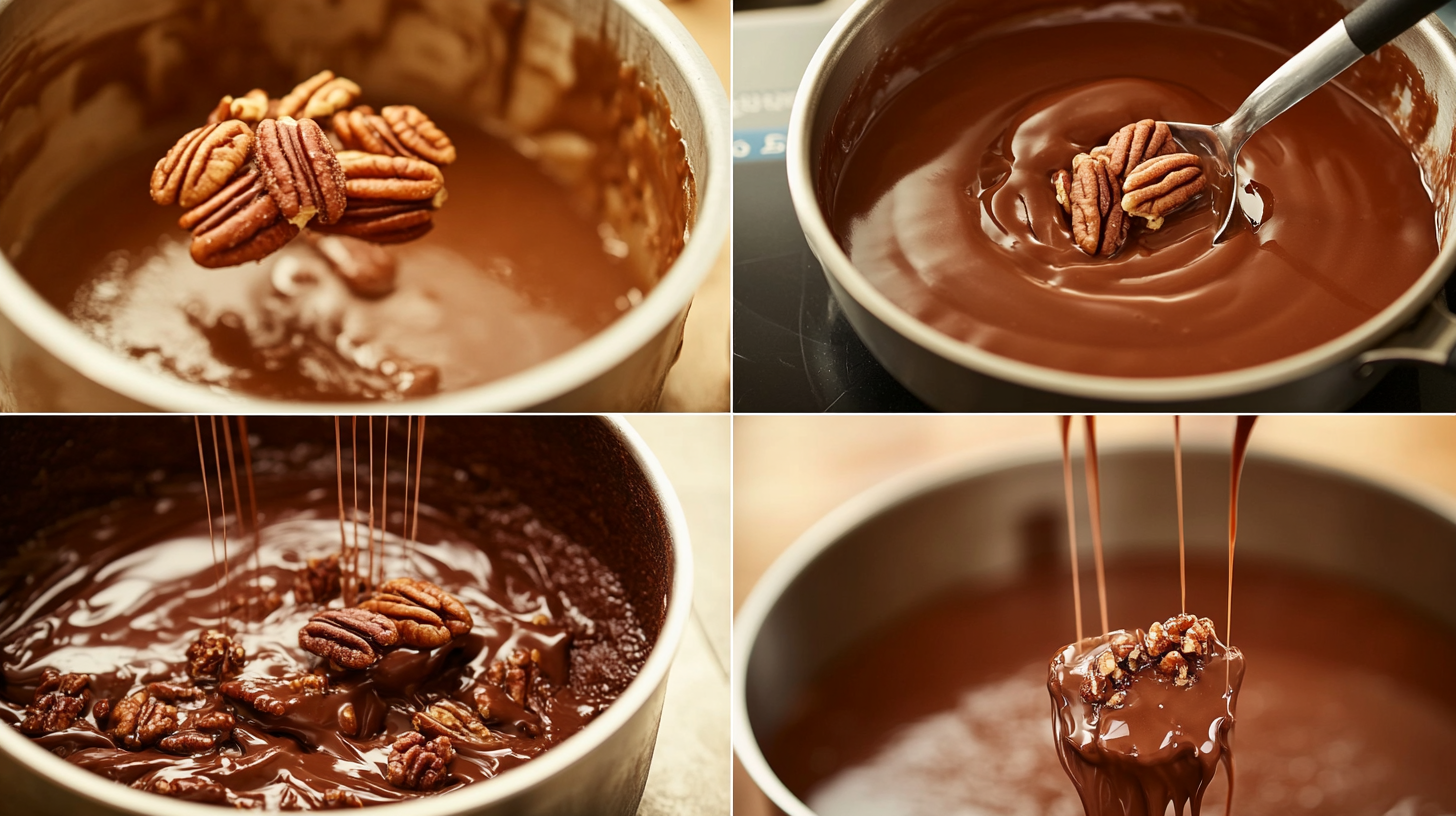Pralines are a delicious treat that combines the earthy taste of nuts with the rich sweetness of caramelized sugar. Originating in Europe and finding new life in the American South, especially in New Orleans, pralines offer a unique texture and flavor that dessert lovers cherish worldwide. In this article, we’ll explore what makes pralines special, the different types available, and how to make and enjoy them.
What is a Praline?
A praline is a candy made by coating nuts like almonds, pecans, or hazelnuts in caramelized sugar. Although pralines may sound simple, the term has different meanings depending on the region. In France, pralines involve caramelized almonds, while Belgian pralines refer to chocolates filled with soft centers. In New Orleans, American pralines use pecans, sugar, and cream, creating a fudge-like texture.
If you’re interested in making a Southern-style version, try this pecan praline recipe for a taste of New Orleans.
Origins of the Praline
The origins of pralines trace back to 17th-century France, where chefs created sugar-coated almonds as treats for the French aristocracy. According to culinary legends, a French chef invented pralines and named the candy after his employer, César, Duke of Choiseul. Later, French settlers brought pralines to the United States, where they adapted the recipe by using pecans instead of almonds. As a result, this change led to the softer, creamier New Orleans-style praline, now a Southern classic. To learn more about praline origins, check out this guide on what pecan pralines are made of.
Types of Pralines Around the World
Interestingly, the term “praline” can refer to different types of candy depending on where you are. Here are the three main types:
- French Pralines: These consist of caramelized almonds, often ground and used in pastries.
- Belgian Pralines: Known as chocolate pralines, these have a hard chocolate shell with a creamy filling.
- American Pralines: Made with pecans, sugar, and cream, these pralines have a soft, crumbly texture similar to fudge.
Ingredients Used in Pralines
The ingredients vary depending on the type of praline, but generally include:
- Traditional Ingredients: Common ingredients like nuts (usually pecans or almonds), sugar, and sometimes cream for a softer texture.
- Modern Variations: Some recipes add chocolate, vanilla, or spices to enhance flavor, giving each praline a unique twist.
Making Pralines: Techniques and Tips
Making pralines requires careful attention to temperature and timing. Here’s a basic outline of the steps:
- Prepare the Nuts: First, roast the nuts, like pecans or almonds, to bring out their flavor.
- Caramelize the Sugar: Then, heat the sugar until it turns golden and develops a rich, caramel flavor.
- Coat the Nuts: Next, stir the nuts into the caramelized sugar until they’re fully coated.
- Cool and Set: Finally, spread the praline mixture onto parchment paper to cool and harden.
If you’d like to try making pralines yourself, this pecan praline recipe offers a traditional approach to Southern-style pralines.
Popular Praline Recipes to Try
Pralines come in a variety of recipes, appealing to different tastes:
- Classic American Praline Recipe: This soft version combines pecans and brown sugar, resulting in a creamy, melt-in-your-mouth texture.
- French Almond Praline: For a crunchy treat, try this recipe made from almonds caramelized in sugar.
- Chocolate Pralines: A Belgian specialty, these feature a hard chocolate shell with a creamy nut filling.
Cultural Significance of Pralines
Pralines play a unique role in both European and American culinary traditions. In France, people often reserve pralines for special occasions or celebrations. In the American South, particularly in New Orleans, pralines are a cultural staple, enjoyed during family gatherings and festive events. Their popularity reflects the blend of flavors that make each praline a special treat.
The Science Behind Praline Texture and Flavor
The unique texture and flavor of pralines come from the caramelization of sugar and the natural oils in nuts. Here’s how these elements contribute:
- Caramelization: When sugar is heated, it changes structure, creating complex flavors and the praline’s signature color.
- Nut Oils: Nuts release oils that make pralines richer and give them a satisfying texture.
Comparing Pralines with Similar Sweets
Although pralines are unique, they are often confused with other nut-based treats. Here’s how they differ:
- Pralines vs. Brittle: Brittle has a hard, glassy texture, achieved by boiling sugar and adding nuts. In contrast, pralines are softer and richer, especially the American versions.
- Pralines vs. Nougat: Nougat is chewy and made with egg whites and honey, creating a different texture from pralines.
- Pralines vs. Toffee: Toffee combines butter and sugar for a hard, brittle texture, typically without nuts.
Frequently Asked Questions About Pralines
Below are answers to some common questions about pralines:
- What makes pralines unique? Pralines combine caramelized sugar and nuts, creating a rich taste and texture that makes them stand out.
- Are pralines gluten-free? Yes, as they primarily contain sugar and nuts, they are naturally gluten-free.
- Can you make pralines without nuts? While rare, some nut-free pralines exist, though traditional pralines rely on nuts for flavor and texture.
- Why do people associate pralines with New Orleans? French settlers in New Orleans adapted the original recipe with pecans, leading to the famous New Orleans-style praline.
Health Considerations and Nutritional Value of Pralines
Pralines are high in sugar and fats, yet they also contain beneficial nutrients from nuts, including protein and fiber. Because of their richness, it’s best to enjoy pralines in moderation as part of a balanced diet.
Where to Buy Pralines and How to Store Them
Pralines are available at specialty candy shops or online. Here are some tips:
- Where to Find Authentic Pralines: For the best experience, look for pralines from New Orleans or authentic French chocolatiers.
- Storing Pralines: Place pralines in an airtight container to keep them fresh, or refrigerate them for a longer shelf life.
Conclusion: The Timeless Appeal of Pralines
Pralines, whether in the form of French almond candy or Southern pecan treats, have long captured the hearts of sweet lovers. Their rich flavors, textures, and cultural significance make them an enduring favorite. Each bite of praline connects you to centuries of tradition and craftsmanship, reminding you of the artistry that goes into every piece.

